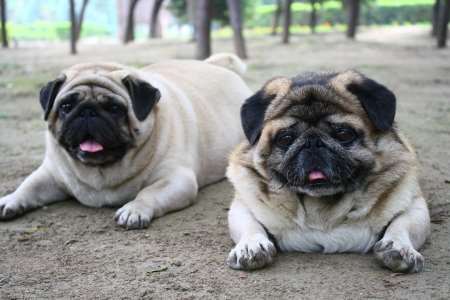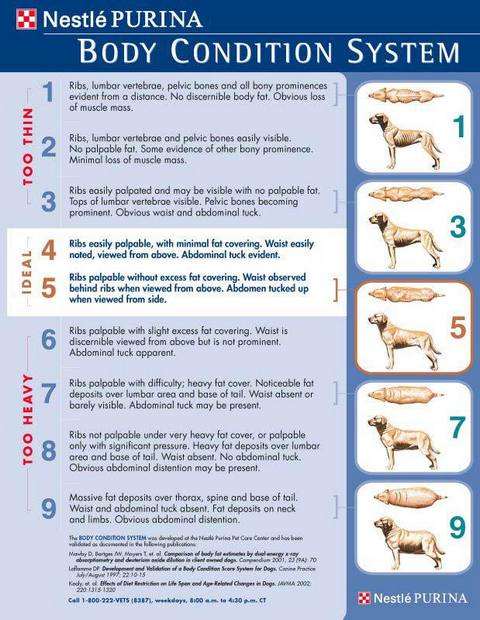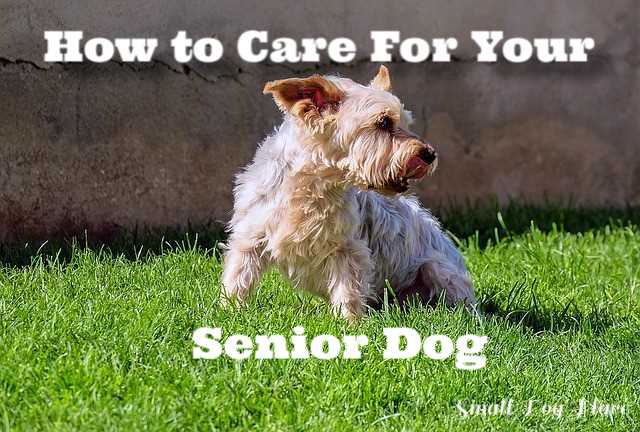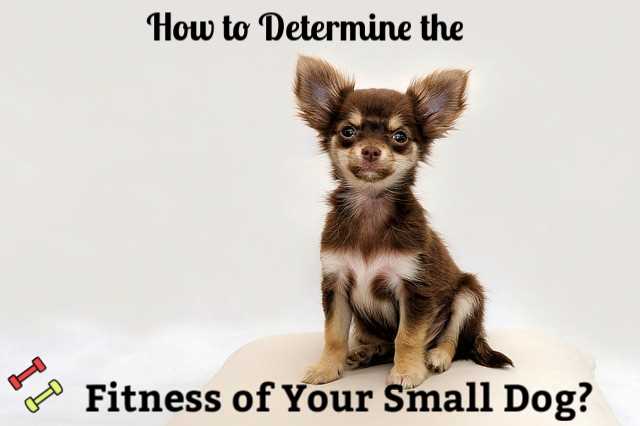Overweight Dog: Is your small Dog Obese?
By Janice Jones |Last Updated 02-06-2020
Do you have an overweight dog? Perhaps you'd like to ignore the situation, but if your Small breed dog is overweight, you are cheating him out of the chance to live the best possible life.
 Overweight Dogs face many health problems that their slimmer cousins avoid.
Overweight Dogs face many health problems that their slimmer cousins avoid.Overweight Small breed dogs are at increased risk of developing painful conditions like osteoarthritis and life-threatening ones like respiratory, cardiovascular disease, Type 2 diabetes, high blood pressure and many forms of cancer.
Typical Medical Conditions that Develop as a Result of Obesity
- Type 2 Diabetes
- Osteoarthritis
- Cardiovascular disease
- Lung disorders
- High blood pressure
- Immune dysfunction
- Many forms of cancer – especially intra-abdominal cancers
We all know that it is very costly and difficult to treat these diseases once they have been established. Prevention is much cheaper and easier. The bottom line: They need to go on a dog diet and get more exercise.
The problem of obesity in our pets is on the rise. According to the sixth annual National Pet Obesity Awareness Day Survey conducted by the Association for Pet Obesity Prevention (APOP) found 59% of cats and 54% of dogs to be overweight or obese by their veterinarian. (2017)
That equals approximately 80 million U.S. dogs and cats.
Why Small Dogs
I don't want to imply that only small dogs are at risk to putting on a pound or two, but they do seem to have their share of obesity cases.
Many small breeds are at risk for obesity. Small breed dog are not as active as larger breed dogs and one of their favorite pastimes is to cuddle up on your lap. It’s so easy to enjoy their company and their pure relaxed contentment on your lap that you forget they need exercise, too.
Another problem that small breed dog owners face is a two edge sword. These dogs learn very quickly. In a weak moment, you give them a great tasting snack and they will never let you forget it.
Too little exercise and too many high calorie snacks only lead to one thing--an overweight dog. And, canine obesity is a serious health concern.
Finally, as owners of small dogs, we often don't comprehend the actual daily calorie count of our little dogs. For example, The Pet Obesity Prevention Organization maintains that for a 10 pound dog, a daily intake of up to 275 calories is sufficient. For 20 pound dogs, they will need up to 400 calories.
That equates to about 1/2 to 2/3 cup of dry kibble per day. As adult people, we could never conceive of surviving on that small ration of food.
Whose to Blame?
Your small breed dog is at your mercy when it comes to meals and snack time, and the only discipline being exercised in doggie's diet is yours.
It is not always easy to look beyond those gorgeous pleading eyes, but when you give in to your dog, you may be doing her more harm than good. Many of our beloved pets are not living out their life expectancy due canine obesity.
As with humans, if you have an overweight dog, the bottom line is that the dog is taking in more calories than necessary. Period!
If your small breed dog is overweight and is otherwise healthy then she is eating way too much and/or not getting the exercise she needs.
How to Tell if Your Dog is Overweight
There are not one size fits all answers to this question. Most people who are told (normally by their veterinarian) that their dog is overweight, may at first be denial.
Next they want to know exactly how much the dog should weigh and how much weight needs to be lost.
If you are a person who loves the numbers the best way to start on a weight loss program is to get a good scale. You can use your own bathroom scale, weigh yourself, weigh both you and your dog and subtract the difference. This method will give you a pretty good estimation but may not be exact.
Another method is to purchase a scale especially designed for weighing small breed dogs. You can get a much more accurate reading on these types of scales.
Another way to determine the ideal weight is to use the Purina Body Conditioning Chart.
You can visually see the difference between an underweight, overweight and ideal weigh by visualizing the chart and your dog. You can also physically feel for ribs.
- You can see and feel the dog's ribs clearly. Underweight
- You can feel the ribs and there is little fat covering. Ideal Weight
- You cannot see or feel the ribs. There is massive fat deposits over much of the body. Overweight.

What Causes small dogs to be overweight dogs?
Too Many High Calorie Treats
"Lola won't stop pestering me unless I give her a treat and she won't settle at night unless he gets his special sausage treat."
Good for Lola! She has successfully learned how to manipulate this owner into a treat for herself. Talk about negative conditioning here.
Lola’s owner hasn't trained her properly to have some manners and instead Lola has managed to train her owner. She knows exactly what being a nuisance will do—it will get her a treat and eventually the pounds start to mount on her.
There is no shortage of dog treats on the market today. Just visit a supermarket or pet store and you will notice that there is often an entire isle devoted to treats alone.
Giving a dog a treat without making them work for it not only hurts the relationship, it undermines any training you are doing and it puts on extra pounds.
Dog treats are only part of the problem. As humans, we like to snack, especially while watching TV.
If our favorite canine is snuggled closely, it’s very easy to give her the same foods you are eating without paying much attention to the amount your dog is consuming.
How Many Calories is too many calories: Consider this.
According to the veterinarians at the Advanced Veterinary Care Centers, there are formulas that can be used to calculate exactly how many calories your dog will need to maintain his current body weight. Furthermore, you can go one step farther and calculate how much he needs to reach his ideal body weight.
[70 x (ideal weight in kg)] ¾ or [70 x (ideal weight in kg)] to the ¾ power
RER in kcal/day = 30(body weight in kilograms) + 70
Easy, right?
Luckily, for your mathematically challenged individuals including myself, they have broken it down into a chart.
Target Weight Normal Requirements
5.5 lb (2.5 kg) 250 calories
11 lb (5 kg) 450 calories
22 lb (10 kg) 750 calories
33 lb (15 kg) 1000 calories
Note: This is a general guideline only and is not meant as a substitute from your veterinarian's specific recommendations.
In human terms, a 250 calorie snack would include: 1 apple topped with 1 tablespoon peanut butter and 1 cup fat-free milk.
If you have an 11 pound (5 kg) dog, the equivalent calorie requirement would be approximately 2 soft tacos from Taco Bell and a bottle of water.
When thinking about calories, we must take the size of our dogs into consideration.
Picky Eaters = Overweight Dogs
One of the most common excuses for overweight dogs in this country goes something like this: "Bella won't eat dog food." So, then what does Bella eat?
You got it, table scraps and whatever it wants. Here we are not describing a well-researched home cooked diet, just what’s left over when the people finish eating.
Oftentimes overweight dogs also become ones who are excellent at begging at the table. It only takes a couple of times when an owner is in an overindulgent mood to get the begging habit started.
Once little Bella has succeeded in training the owners to give her what she wants, the habit gets entrenched in both the dog and the owner’s mind.
As we all know, habits are hard to break. Sadly, though the dog is paying the price for it physically. Small breed dog are much more likely to prefer food from his owner’s hands then a dog bowl.
Here again, the dog is not getting the proper nutrition, but has learned still another bad habit: Begging.
Lack of Exercise:
A common cause of overweight dogs
Most Small breed dogs do not need a ton of exercise. They can often get most of their requirements by following you around the house every day or running around the yard.
Some enjoy a quick burst of energy where they run wildly seeming to enjoy every moment. They also enjoy short brisk walks with their favorite human.
But what about those dogs who are confined to small spaces while the owner works, does not have opportunities to move about the house or take walks. These dogs are at risk especially if they also enjoy a high calorie diet.
Medical Causes
Sometimes there is a medical reason for a dog gaining weight. If your dog is experiencing weight gain, you should have her examined by your Vet to check for heart, thyroid or other metabolic disorders to rule out a possible medical cause.
Some common diseases associated with weight gain include hypothyroidism and hyperadrenocorticism or Cushing’s disease. Small breed dogs as a breed are prone to thyroid problems.
Treatment Ideas for Overweight Dogs
Check with your Vet First
Before you decide to put little Bella on a diet, check with your veterinarian. Get an accurate record of his weight and determine the ideal weight for his breed.
If she is a purebred dog, you can get the breed standard on the AKC website. Their weight should be proportional to their overall size.
Your veterinarian will be able to tell you how many daily calories your dog can consume and still begin to lose weight. This amount must include all the extra table scraps, treats and doggie cookies you are now feeding.
Become a Dog Food Label Expert
Next you will want to become fluent in reading dog labels to find the best dog food that Bella will eat. The easiest way to manage a diet is to remove all treats entirely and then substitute them for something healthy and low calorie such as carrots, celery, broccoli or asparagus.
Many dogs love the crunchy feeling that accompanies nibbling on raw veggies.
First take a good hard look at the food you are feeding. The FIRST ingredients present in the bag of food should be MEAT or meat products, NOT grains like corn.
Look at the first five ingredients and compare two or more brands. Premium or higher quality dog foods will have more meat, fish or poultry as the main ingredients.
Small breed dogs do much better on commercial diets that do not contain the grains, corn, wheat or soy.
Best Diets to Help Your Dog Loose Weight
Consult with your vet before adding supplemental fiber to your dog's diet. Some good sources of fiber that also make good snacks include:
- Pumpkin (not pumpkin pie puree)
- Sweet Potato
- Carrots
- Peas
- Green Beans
Now that you are a dog food label expect, you can make some excellent choices for a weight loss diet.
- Choose a food that has a high protein content that comes from an animal source. Meat or Fish are listed as meals and are included in the first 5-7 ingredients.
- A diet high in fiber will help control blood sugar and help reduce weight. (Know that this is also going to increase the amount of ecretment passed each day.) In the dog food look for fiber sources such as vegetables, brown rice and oats, rice hulls, corn and corn by-products, soybeans, beet pulp and bran. Some of these sources are better than others. Remember though, that the ingredients listed on the label are in descending order with the heaviest weighing ingredient first. High fiber dog foods may be a good choice if supplementing is not working. You can also give the dog Metamucil. Be careful that you are not overloading the system. Diarrhea is usually the result.
- A lower fat diet will also help but don't go overboard with charbohydrates as they will also add weight.
- L-carnitine plays a role in fat metabolism which will result in maintain and develop lean muscle mass.
- Added glucosamine and chondroitin if your dog is overweight due to joint pain and cannot exercise.
Snack Time Options
In the meantime, if she begs – do NOT give in. If he has finished the bowl of food and looks expectantly at you for more, give him a bowl of fresh water instead. If you must give him something when he begs, offer him a couple pieces of his normal kibble.
Sometimes this works because it has your scent on the food. If he refuses, shrug your shoulders and walk away.
At the end of two weeks, weigh him again. If he has lost some weight, great, then stick to this schedule. If not, reduce his intake and also find out if someone else in the house is sneaking treats. Doggie Diets are only successful if everyone in the household is on the same page.
Low Cal Diet
If you're wondering about low calorie diets for overweight dogs, you can purchase them, but many vets don't like to recommend them as they have very restricted fat levels.
When they produce dog foods with reduced fats, the carbohydrates are increased. When dogs ingested additional carbohydrates, their bodies must produce extra insulin.
What happens is that the extra insulin production tells the dog’s body to store the unused calories as fat. It becomes a vicious cycle.
If you'd like to try one, here are a few of my recommendations.
- Smaller kibble size
- reduced calorie diet
- No wheat, corn, soy, artificial colors or preservatives or meat by-products.
- Made in the USA
- Adult Farm-Raised Chicken, Brown Rice & Sweet Potato Recipe Dog Food
- Formulated for small breed dogs
- Farm-raised chicken is the #1 ingredient
- Contains Omega 3 & 6 Fatty Acids to promote Healthy Skin & a Soft, Shiny Coat
- NoGMO Ingredients*
- Grain free, limited ingredient dog food
- Helps minimize the number of ingredients dogs are exposed to
- Complete, balanced nutrition for adult dogs
- No artificial flavors, colors, or preservatives
- BLUE Life Protection for Senior Dogs features the ingredients to support their overall health and well-being.
- Made in the USA
Exercise Options
Exercise is important especially for dogs that are overweight. To benefit from a walk, however, requires you to pick up the pace.
A casual stroll stopping every few minutes to sniff is not going to burn off many calories. A short brisk walk is better than a long leisurely stroll.
Play Fetch: Not all small dogs enjoy this game, but if yours does, by all means play it daily. Your dog will get plenty of exercise and you will have some great bonding time with him as well.
Does your dog get those bursts of energy where running wildly from room to room may at first glance suggest some form of mania has overtaken your otherwise calm dog.
No, dogs love to run and if you have more than one dog, you are likely to witness a fast paced game of catch on more than one occasion.If possible, encourage this, but don't overdo it.
Extra Water
Always offer plenty of cool fresh water during and after exercise and if the weather is especially warm, limit exercise times to early morning or evening when temperatures drop.
We all love our pets and want what is best for them. Sometimes we tend to kill them with our kindness by providing unhealthy diets.
There are far better ways for us to show our love than with too much food. Your pet will almost certainly enjoy spending more time on walks or playing games with you than he or she would when eating alone.
There are plenty or nutritious foods which have loads of doggie palate appeal out there, so you should never feel like Bella is missing something by not dining at the family table.
About Janice (author and voice behind this site)
Having lived with dogs and cats most of her life, Janice served as a veterinary technician for ten years in Maryland and twelve years as a Shih Tzu dog breeder in Ohio.
Her education includes undergraduate degrees in Psychology with a minor in biology, Early Childhood Education, and Nursing, and a master's in Mental Health Counseling.
She is a lifelong learner, a dog lover, and passionate about the welfare of animals. Her favorite breed for over 50 years has been the Shih Tzu, but she has also lived with Poodles, Maltese, Yorkshire Terriers, Beagles, English Bulldogs, Carin Terriers, and a Cocker Spaniel.
When not writing, reading, and researching dog-related topics, she likes to spend time with her eight Shih Tzu dogs, husband, and family, as well as knitting and crocheting. She is also the voice behind Miracle Shih Tzu and Smart-Knit-Crocheting
Does This Article Deserve Your Thumbs Up?
We always appreciate your support and encouragement. Your thumbs up means so much to us. Please like this article.
If you find this page or any page on Small Dog Place Helpful, or useful in anyway, I'd love it if you would click the small heart found on the bottom right of each page.
You can also share or bookmark this page -- just click on the:

Free Monthly Newsletter
Sign Up for Our Free Newsletter and get our Free Gift to You.
my E-book, The Top 10 Mistakes People Make When Choosing a Dog (and how to avoid them)










